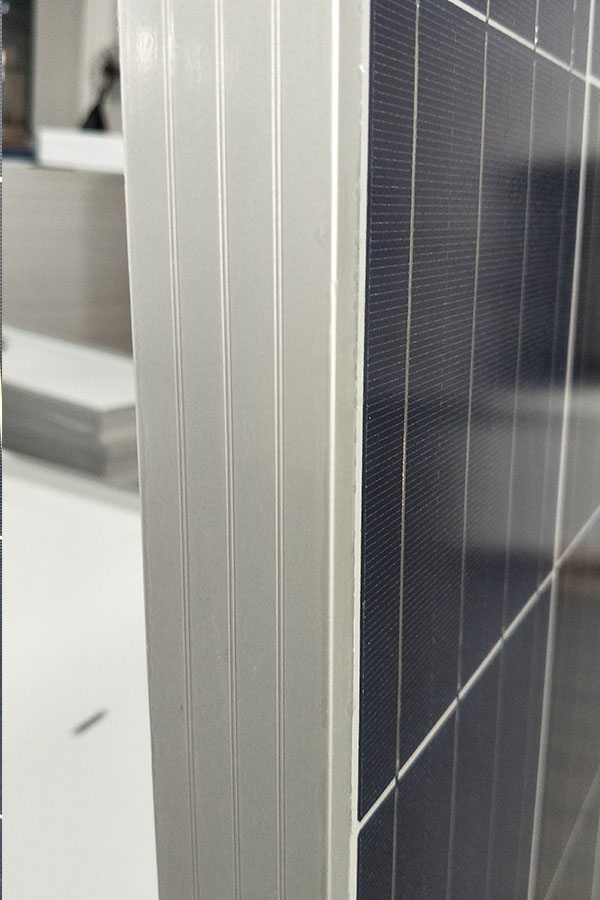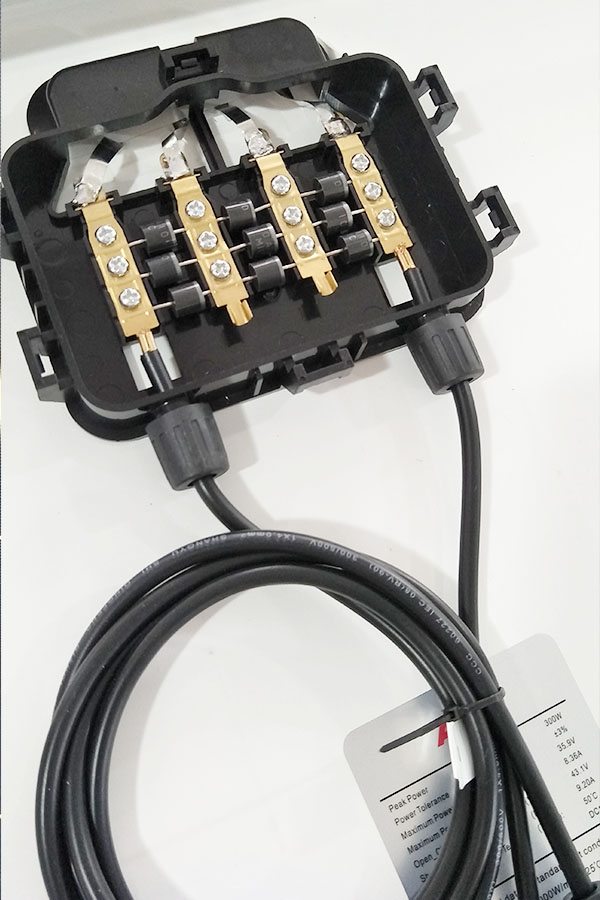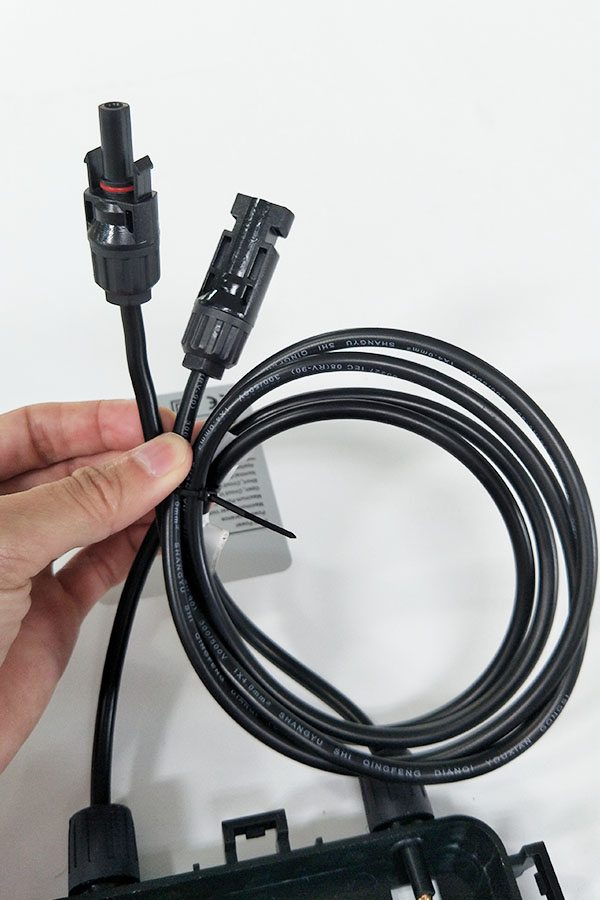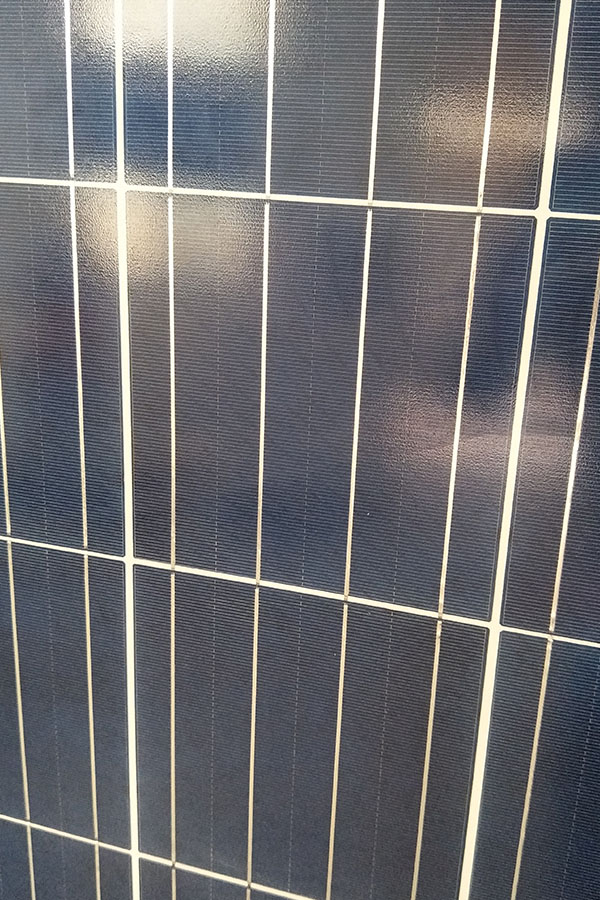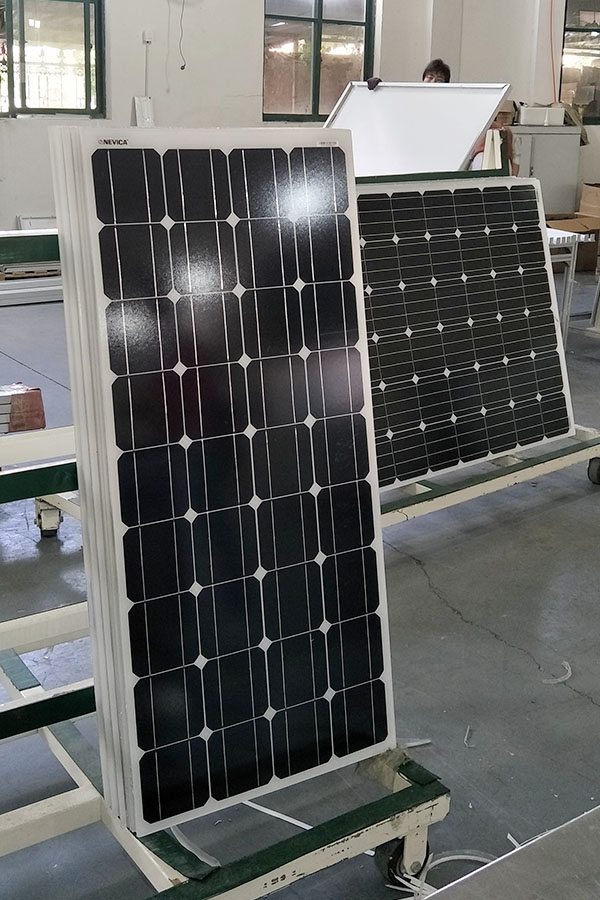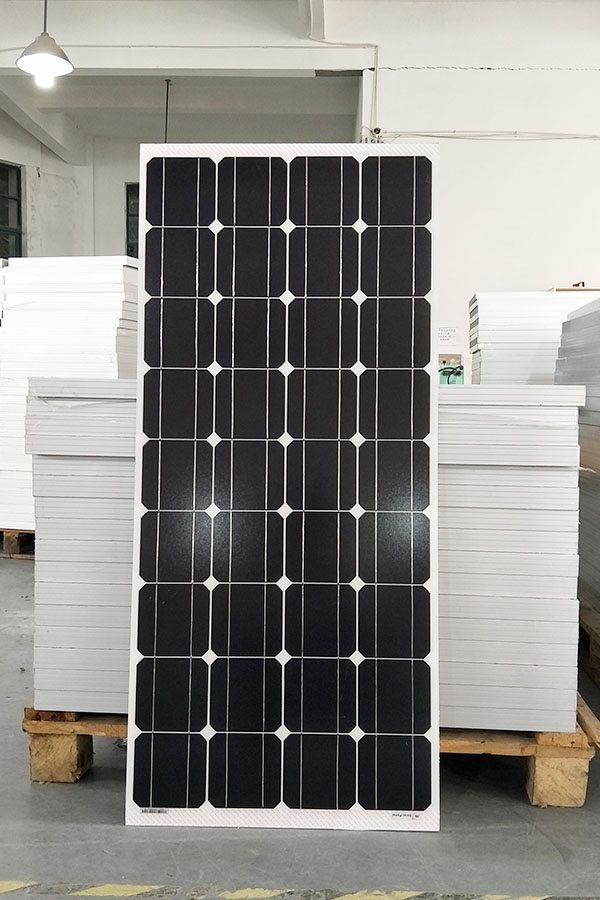Manufacturer for Poly-crystalline Solar Panel 200W Japan Importers
Short Description:
continue to improve, to ensure product quality in line with market and customer standard requirements. Our company has a quality assurance system have been established for Manufacturer for Poly-crystalline Solar Panel 200W Japan Importers, "Passion, Honesty, Sound service, Keen cooperation and Development" are our goals. We are here expecting friends all over the world!
Poly-crystalline Solar Panel 200W
Technical parameter
Maximum Power(W) 200W
Optimum Power Voltage(Vmp) 26.78V
Optimum Operating Current(Imp) 7.47A
Open Circuit Voltage(Voc) 32.66V
Short Circuit Current(Isc) 8.21A
Mechanical Characteristics
Cell Type Polycrystalline 156x156mm (6 inch)
No of Cell 54 (6x9pcs)
Dimensions 1482x990x40mm
Weight 17.6Kg
Front Glass 3.2mm,High Transmission, Low Iron,Tempered Glass
Junction box IP65 Rated
Output Cable TUV 1×4.0mm2/UL12AWG,Length:900mm
Temperature and Coefficients
Operating Temperature(°C): -40°C ~ + 85°C
Maximum System Voltage: 600V(UL)/1000V(IEC) DC
Maximum Rated Current Series: 15A
Temperature Coefficients of Pmax: -0.47%
Temperature Coefficients of Voc: -0.389%
Temperature Coefficients of Isc: 0.057%
Nominal Operationg Cell Temperature (NOCT): 47+/-2°C
Materials of solar panel
1).Solar Cell——Polycrystalline solar cell 156*156mm
2).Front Glass——-3.2mm, high transmission, low iron, tempered glass
3).EVA——-excellent anti-aging EVA
4).TPT——-TPT hot seal made of flame resistance
5).Frame——anodized aluminum profile
6).Junction Box——-IP65 rated, high quality, with diode protection
Superiority: high quality anodized aluminum frame, high efficiency long life, easy installation, strong wind resistance, strong hail resistance.
Features
1. High cell efficiency with quality silicon materials for long term output stability
2. Strictly quality control ensure the stability and reliability, totally 23 QC procedures
3. High transmittance low iron tempered glass with enhanced stiffness and impact resistance
4. Both Poly-crystalline and Mono-crystalline
5. Excellent performance in harsh weather
6. Outstanding electrical performance under high temperature and low irradiance
Quality assurance testing
Thermal cycling test
Thermal shock test
Thermal/Freezing and high humidity cycling test
Electrical isolation test
Hail impact test
Mechanical, wind and twist loading test
Salt mist test
Light and water-exposure test
Moist carbon dioxide/sulphur dioxide
Global Hybrid Solar Cells Market Trends, Demand, Research, product price, profit, Capacity, Production, Classifications, Applications, Opportunities, Segmentation and Forecast 2015
Complete Report At: http://www.researchbeam.com/global-hybrid-solar-cells-industry-2015-research-report-market
Research Beam adds a report titled “Global Hybrid Solar Cells Industry 2015 Market Research Report” that provides latest market trends and opportunities. The report offers detailed analysis of the Hybrid Solar Cells Industry.
2015 Global Hybrid Solar Cells Industry Report is a professional and in-depth research report on the world’s major regional market conditions of the Hybrid Solar Cells industry, focusing on the main regions (North America, Europe and Asia) and the main countries (United States, Germany, Japan and China).
The report firstly introduced the Hybrid Solar Cells basics: definitions, classifications, applications and industry chain overview; industry policies and plans; product specifications; manufacturing processes; cost structures and so on. Then it analyzed the world’s main region market conditions, including the product price, profit, capacity, production, capacity utilization, supply, demand and industry growth rate etc. In the end, the report introduced new project SWOT analysis, investment feasibility analysis, and investment return analysis.
The report includes six parts, dealing with: 1.) basic information; 2.) the Asia Hybrid Solar Cells industry; 3.) the North American Hybrid Solar Cells industry; 4.) the European Hybrid Solar Cells industry; 5.) market entry and investment feasibility; and 6.) the report conclusion.
Table of Contents:
Part I Hybrid Solar Cells Industry Overview
Chapter One Hybrid Solar Cells Industry Overview
1.1 Hybrid Solar Cells Definition
1.2 Hybrid Solar Cells Classification Analysis
1.2.1 Hybrid Solar Cells Main Classification Analysis
1.2.2 Hybrid Solar Cells Main Classification Share Analysis
1.3 Hybrid Solar Cells Application Analysis
1.3.1 Hybrid Solar Cells Main Application Analysis
1.3.2 Hybrid Solar Cells Main Application Share Analysis
Chapter Two Hybrid Solar Cells Up and Down Stream Industry Analysis
2.1 Upstream Raw Materials Analysis
2.1.1 Upstream Raw Materials Price Analysis
2.1.2 Upstream Raw Materials Market Analysis
2.1.3 Upstream Raw Materials Market Trend
2.2 Down Stream Market Analysis
2.1.1 Down Stream Market Analysis
2.2.2 Down Stream Demand Analysis
2.2.3 Down Stream Market Trend Analysis
Part II Asia Hybrid Solar Cells Industry (The Report Company Including the Below Listed But Not All)
Chapter Three Asia Hybrid Solar Cells Market Analysis
3.1 Asia Hybrid Solar Cells Product Development History
3.2 Asia Hybrid Solar Cells Process Development History
3.3 Asia Hybrid Solar Cells Industry Policy and Plan Analysis
3.4 Asia Hybrid Solar Cells Competitive Landscape Analysis
3.5 Asia Hybrid Solar Cells Market Development Trend
Enquire About Report:
http://www.researchbeam.com/global-hybrid-solar-cells-industry-2015-research-report-market/enquire-about-report
Chapter Four 2010-2015 Asia Hybrid Solar Cells Productions Supply Sales Demand Market Status and Forecast
4.1 2010-2015 Hybrid Solar Cells Capacity Production Overview
4.2 2010-2015 Hybrid Solar Cells Production Market Share Analysis
4.3 2010-2015 Hybrid Solar Cells Demand Overview
4.4 2010-2015 Hybrid Solar Cells Supply Demand and Shortage
4.5 2010-2015 Hybrid Solar Cells Import Export Consumption
4.6 2010-2015 Hybrid Solar Cells Cost Price Production Value Gross Margin

